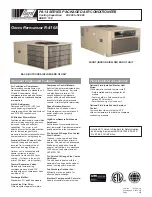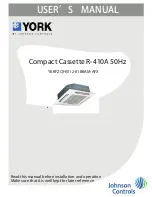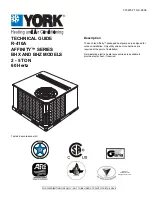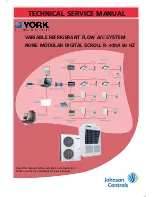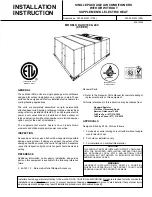
12
Installation Procedure
English
Installation Pr
oc
edur
e
2
Be sure to use an insulator thick enough to cover the
refrigerant tube to protect the condensate water on
the outside of the pipe falling onto the floor and to
improve the efficiency of the unit.
3
Cut off any excess foam insulation.
4
Make sure that there are no cracks or waves on the
bent area.
5
It would be necessary to double the insulation
thickness (10 mm or more) to prevent condensation
even on the insulator when if the installed area is
warm and humid.
6
Do not use joints or extensions for the pipes
connecting the indoor and outdoor units. The only
permitted connections are those for which the units
are designed.
CAUTION
• Connect the indoor and outdoor units using pipes
with flared connections (not supplied). For the lines,
use insulated, unwelded, degreased and deoxidized
copper pipe (Cu DHP type to ISO 1337 or UNI EN 12735-
1), suitable for operating pressures of at least 4.2 MPa
and for a burst pressure of at least 20.7 MPa. Copper
pipe for hydro-sanitary applications is completely
unsuitable.
• For sizing and limits (height difference, line length,
max. bends, refrigerant charge, etc.) see the outdoor
unit installation manual.
• All refrigerant connection must be accessible, in order
to permit either unit maintenance or removing it
completely.
• If the pipes require brazing, make sure that oxygen
free nitrogen (OFN) is flowing through the system.
• Nitrogen blowing pressure range is 0.02 to 0.05 MPa.
Step 8 Performing the gas leak test
To identify potential gas leaks on the indoor unit, inspect
the connection area of each refrigerant pipe using a leak
detector for R-410A.
Before recreating the vacuum and recirculating the
refrigerant gas, pressurize the whole system with
nitrogen (using a cylinder with a pressure reducer) at a
pressure above 4.1 MPa in order to immediately detect
leaks on the refrigerant fittings.
Made vacuum for 15 minutes and pressurizing system
with nitrogen.
Liquid side
Gas side
Insulator
Step 9 Insulating the refrigerant pipes
Once you have checked that there are no leaks in the
system, you can insulate the piping and hose.
1
To avoid condensation problems, place Acrylonitrile
Butadien Rubber separately around each refrigerant
pipe.
No gap
NBR (T13.0 or thicker)
NOTE
• Always make the seam of pipes face upwards.
2
Wind insulating tape around the pipes and drain hose
avoiding compressing the insulation too much.
3
Finish wrapping insulating tape around the rest of the
pipes leading to the outdoor unit.
Содержание AJ026TN1DKH
Страница 33: ...33 English Appendix MEMO...
Страница 34: ......




























